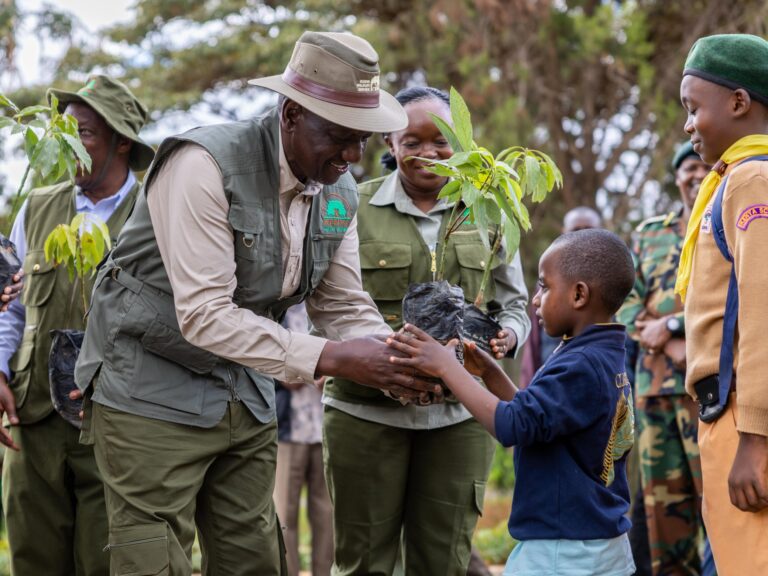
Improved 'Kienyeji' chicken at Trizah Mwangi's farm in Mau Narok. Photo/Daniel Kipchumba
Wanderi Kamau and Daniel Kipchumba
It is midmorning, and the sun’s rays filter through the tree branches on Triza Mwangi’s farm, as dogs bark to mark our arrival.
She emerges from the chicken house wearing a blue overall and a pair of black gumboots. Washing chicken feed residues off her hands, she warmly welcomes us.
Ms Mwangi, a mother of three residing in Mau Narok, Nakuru County, is a seasoned poultry farmer specializing in the popular kienyeji chicken. For over five years, she has navigated the ups and downs of the trade.
“I started in mid-2020 with a hundred-day-old chicks from a nearby farm and learned through the process,” she says.
Her poultry venture was inspired by the need to supplement her family’s diet due to the scarcity of eggs in the area.
Read also: Macadamia farmers back govt policy amid price drop concerns
“What inspired me at first was ensuring my family had enough eggs. Later, I realized there was a shortage in the area, so I decided to go into poultry farming fully. The need is still there; the gap has not been filled,” she explains.
Currently, the high cost of feeds remains her biggest challenge. “The prices of both chick mash and layers mash are a challenge. They range from Ksh 4,500 to Ksh 8,000 per 2 kg bag,” Triza notes.
Her farm is home to over 1,500 fully grown birds and 300 chicks in her hatchery, which she manages with the help of two youthful workers from the village. Despite the challenges, she acknowledges the venture has significantly improved her economic status and that of the local community.
“The main challenge I have encountered is the high cost of production due to expensive feeds and disease outbreaks. To manage this, I mix my own feeds, maintain a clean environment, and utilize knowledge gained from farmer training groups to protect the birds from diseases,” she says.
Thriving against the odds
Approximately 30 kilometers from Mau Narok, Joseph Kahura, a capsicum farmer in Njoro, shares a similar journey. He ventured into agribusiness four years ago, driven by economic hardship and the need to improve his family’s diet.
“I was struggling financially, and farming seemed like a viable option. I chose capsicum because I had seen a friend succeed in it, and only a few farmers grow it,” Kahura says.
His capsicum is grown in three greenhouses, which he acquired through farmer groups in the area. However, like Triza, he faces challenges.
“Pests, diseases, lack of water for irrigation due to climate change, and high production costs are major issues. To reduce pesticide use, I spray my crops with rabbit urine—it repels insects and prevents some diseases. I have also dug a small dam to harvest runoff water for irrigation,” he explains.
Despite the hurdles, the venture has significantly improved his financial situation.
“I sell my capsicum to supermarkets in Nakuru Town at Ksh 120 per kilogram. In a good harvest, I produce up to 2,000 kilograms. I reinvest my earnings to buy more greenhouses and expand my project. The supermarkets come to the farm, so I don’t incur transport costs, which strengthens my profit margin. Since I started, school fees and foodstuffs have not been a struggle,” Kahura says.
A call for resilience and government support
Agricultural extension officer Gladys Koech urges farmers to remain resilient despite the challenges and find climate change mitigation strategies.

“Farmers should hold on to agriculture despite the high cost of production. They should explore cost-cutting alternatives, such as digging water pans to harvest runoff water. Given the growing world population, we must embrace sustainable agricultural practices to ensure food security,” she advises.
Triza believes that to combat food insecurity in Kenya and globally, government intervention is crucial.
“The government should provide subsidies on agricultural essentials like chicken feeds and fertilizers. This would lower production costs, increase output, and make food more affordable,” she suggests.
The looming food crisis
According to the United Nations Children’s Fund (UNICEF) Humanitarian Situation Report, as of February 2023, 4.4 million people in Kenya were acutely food insecure due to drought. Additionally, 970,214 children under five required treatment for malnutrition.
Also read: Relief to Miraa farmers as govt increase prices
The National Disaster Management Authority reports that food security in Arid and Semi-Arid Lands (ASAL) counties is deteriorating. The number of people in need of humanitarian aid has risen to 4.4 million, up from 3.5 million in July 2022, due to prolonged drought. This trend reflects declining food security in 23 counties across Kenya, with 495,362 people in non-ASAL counties also experiencing food insecurity.
With agriculture at the heart of human survival, Triza, Kahura, and thousands of other farmers continue to fight against food insecurity through innovation, resilience, and sustainable practices. However, for lasting solutions, they insist that government support and policy interventions must be prioritized.




1 thought on “Rearing hope: Nourishing a hungry world through sustainable agriculture”
Comments are closed.